Implementing measures to reduce the spread of COVID-19 has come as a challenge to communities around the world, but is especially complicated for remote camp systems. How can man camps — which often consist of hundreds or even a thousand-plus workers in close quarters — stem disease spread and prevent a potentially catastrophic outbreak?
Remote camps are often used by industries that are considered essential services, such as mining and construction. While voluntarily closing the camps may seem like a smart choice, doing so would mean putting a significant amount of people out of work — which could have devastating financial implications if the camp sources most of its labor from a local community.
Still, continued operations pose serious problems as well, in more ways than one. The shared sleeping quarters, cafeterias, recreational facilities, and workspaces typical of remote camps mean that the introduction of just one coronavirus case could quickly cause an outbreak. If the camp flies its staff in from distant cities (a practice known as “fly in, fly out” [FIFO]), it could then spread the disease across the U.S. and contribute to additional outbreaks.
On the other hand, if the camp is located near a remote community, and especially if it sources its workforce from this community, it could cause an outbreak among local residents and major public health concerns. Many mining camps are located near indigenous communities and/or rely on indigenous workforces, who are already at increased risk and may have inadequate access to health services. For example, Australian mining companies are one of the largest employers of Aboriginal people, who can be at increased risk of diabetes and kidney and heart diseases and have an average life span that’s almost a decade shorter than that of other Australians.
In addition to the obvious public health concerns associated with a potential outbreak, remote camps also face risks to their reputations and, as a result, the possibility that investors could reassess their holdings.
Before these possibilities transition from risks to reality, remote camps across all industries need to implement measures to prevent the spread of infection and prepare to handle a potential outbreak.
This guide is for informational purposes only. If adapting remote camp operations during the COVID-19 outbreak, we recommend contacting your local or industry-specific governing agency for guidelines. If no such guidelines exist, consider implementing the practices below or referencing the guidance issued by other governments or organizations. The guidelines issued by the Yukon and Alberta provinces of Canada are both very helpful and inform the practices outlined below.
Support for Nearby Communities During COVID-19
Given the significant impact that a coronavirus outbreak could have on nearby communities, remote camps should do everything in their power to support these communities.
For instance, if camp personnel typically travel to a local community for recreation or shopping, camp administrators should put a stop to this activity to avoid social mixing. If necessary, the camp should provide its personnel with the items that they can no longer obtain from the community.
The opposite situation may apply instead if local communities utilize grocery stores or other services in mining towns. Some mining companies have distributed food and care packages to such communities so that they don’t have to visit nearby mining towns and put themselves at risk.
In a worst-case scenario in which an outbreak has occurred in a remote camp and it has spread to a nearby community, the camp should take on the responsibility of ensuring sufficient treatment and testing if either is lacking in the area.
The majority of remote camps’ efforts to support nearby communities, though, should focus on preventing infection in the first place by following the practices outlined below.
[Related: How to Create a Positive Culture in Your Man Camp]
Supplies for Controlling Infections of COVID-19
All remote camps should have a sufficient stock of supplies to control infection and support proper hygiene practices for all staff and workers. Supplies may include but are not limited to:
- Soap and water
- Hand sanitizer with a minimum alcohol content of 60%
- Cleaning supplies
- Tissues
- Disposable gloves
- Face masks
Cleaning and Disinfecting Measures
In addition to regular cleaning measures, remote camps should disinfect high-touch areas (doorknobs, handles, light switches, keyboards, phones, sinks, faucets, toilets, countertops, desks, tables, etc.) at least once a day. Frequently used equipment and vehicles should also be cleaned and disinfected between shifts in addition to their regular cleaning.
The Centers for Disease Control and Prevention (CDC) recommends disinfecting with:
- An EPA-registered household disinfectant
- A diluted bleach solution with a sodium hypochlorite concentration of 5 to 6% (5 tablespoons [or 1/3 cup] bleach per gallon of room-temperature water)
- An alcohol solution with at least 70% alcohol
The CDC also recommends cleaning surfaces with soap and water before disinfecting to reduce the number of germs present. Wear disposable gloves when cleaning and disinfecting and remove them carefully to avoid contamination.
Hygiene Measures
Good hygiene will be essential in preventing the spread of COVID-19 within remote camps, and includes both hand and respiratory measures. Camp operators should ensure that hand hygiene facilities and supplies are available throughout the camp, including within close proximity to work areas, and instruct both staff and workers on best practices:
- Wash hands frequently with water and soap or hand sanitizer. This is most important:
- Before preparing food, eating, or drinking
- After using the bathroom
- After touching high-touch surfaces such as handles, doorknobs, etc.
- After blowing your nose, sneezing, or coughing
- Before and after contact with anyone who is sick
- Use soap and water if your hands are soiled (for example, with food or dirt), as hand sanitizer is not effective in this case.
- If your hands are soiled but water and soap are not available, first use hand wipes to clean your hands and then use hand sanitizer.
- When using water and soap, wash your hands for at least 20 seconds.
Camp operators should also instruct staff and workers in proper respiratory etiquette, including the following practices:
- Cover your nose and mouth with a tissue or sleeve when sneezing or coughing.
- Immediately dispose of used tissues in the trash.
- Wash your hands after sneezing or coughing.
[Related: Health and Safety Best Practices for Man Camps]
Food Handling
Germs can easily spread from contaminated surfaces or infected people to food, so remote camps should prepare to alter their typical methods for preparing and serving food and increase sanitation and safety practices. In its guidelines for work camps, the government of Yukon recommends minimizing the handling of shared food and objects that may come into contact with someone’s food by:
- Dispensing food directly to individuals instead of using self-serve buffet lines
- Removing shared food containers — including pitchers of beverages, coffee cream dispensers, salt and pepper shakers, condiments, and so on — from cafeterias
- Using only prepackaged snacks and dispensing them to individuals directly
- Minimizing the handling of silverware
- Cleaning and disinfecting all surfaces after every meal
- Ensuring that staff handling food practice good hygiene
Laundry Handling
The Yukon government also outlines precautions that remote camps should take when handling laundry to prevent infection via contaminated linens:
- Wear gloves and a face mask when handling contaminated laundry.
- Place contaminated laundry into a basket with a plastic liner or a laundry bag and do not shake it.
- Clothing and linens used by an infected person don’t have to be washed separately from other laundry — just use hot water and regular laundry detergent.
- Dry laundry thoroughly.
- Wash hands after handling contaminated laundry and after removing masks or gloves.
- Disinfect laundry containers that come into contact with contaminated laundry.
Social Distancing for COVID-19
Social distancing will certainly be a challenge for remote camp operations, but any measures possible to minimize contact, large gatherings, and mixing of groups will be crucial in preventing disease spread. Social distancing in a remote camp might include any of the following steps:
- Separate individual workspaces by at least 6 feet, if possible.
- Stagger meal times or add additional dining facilities to decrease the number of workers in a dining area at a given time.
- Transition to virtual meetings to avoid large gatherings.
- Close communal recreational areas.
- Keep high-risk populations (such as the elerly or people with underlying medical conditions) at home, preferably with paid leave.
- Separate FIFO staff from local workers to avoid spreading infections to different areas.
- Break up communal living quarters with additional facilities so that fewer people share each space.
[Related: Social Distancing Measures to Help Reopen Schools]
Screening and Testing for COVID-19
Screening for COVID-19 will be essential to prevent the spread of the disease should anyone become infected. Remote camps should have screening procedures in place for when anyone enters or leaves the camp facilities, including staff, workers, visitors, clients, and so on.
The government of Alberta recommends that industrial work camps in the province utilize both temperature checks and questionnaires to screen individuals. Their published guidelines include a tool for screening external visitors with the following questions:
- Do you have any of the symptoms listed below?:
- Runny nose
- Sore throat
- Difficulty breathing / shortness of breath
- Cough
- Fever
- In the last 14 days, have you or anyone in your household travelled outside of [location]?
- In the last 14 days, have you or anyone in your household been in contact with anyone who is confirmed to be or suspected of being infected with COVID-19?
- Are you currently being investigated as a suspected case of COVID-19?
- In the last 10 days, have you tested positive for COVID-19?
Remote camps may also benefit from administering temperature checks or antibody blood tests (to check if someone has been infected with the virus that causes COVID-19 in the past) to people before flying them into remote sites rather than testing them upon arrival. Additionally, self-reporting should be mandatory on a daily basis at the very least, and potentially also between shifts.
Procedures should be in place to isolate individuals as soon as they’re identified as being potential cases through self-reporting or screening. If possible, on-site testing facilities can aid in confirming infections so that isolation resources are not wasted on false cases.
[Related: How to Set Up a Drive-Through Testing Station]
Isolation Measures for COVID-19
As a precaution, remote camps may want to isolate individuals who are arriving from an area with many COVID-19 cases or who have come into contact with an infected person for 14 days (the virus’s maximum incubation period) to monitor for symptoms.
However, most isolation measures should be reserved for people who are suspected of being sick. The government of Yukon asks that remote camps be prepared to safely accommodate individuals requiring isolation on-site and not turn them away, as doing so could contribute to further spreading.
Camp administrators should provide self-isolating individuals with a single-occupancy room and provide them with everything they need to remain in the room (unless hospitalization is required). For instance, meals and supplies should be delivered directly to isolated individuals’ doors, and staff handling their dirty dishes or other materials should wear disposable gloves and follow proper sanitation procedures.
On-Site Treatment Facilities for COVID-19
If possible, or in cases in which a COVID-19 outbreak has already occurred, remote camps should strongly consider setting up on-site treatment facilities for those infected.
Remote camps are often located at great distances from the nearest hospital, and flying infected individuals to the nearest facilities could cause the outbreak to spread geographically. Even if a work camp is located near a small remote town, its health care facilities are likely insufficient to handle a high degree of medical surge and could easily become overwhelmed — or worse, the outbreak could spread to the nearby community.
In the case that an outbreak originating in a remote camp has spread to a nearby community, and that community lacks adequate treatment facilities, remote camps should consider providing them with resources or giving them access to the facilities set up for their workers.
Rapidly Deployable Facilities From Alaska Structures
Remote camps’ challenge in implementing the above measures will come down to educating staff and workers, establishing procedures, gathering resources, and setting up proper spaces. While all of these steps will present unique obstacles, setting up space — for additional housing, isolation, testing, and treatment — may pose the most tactically challenging.
For remote camps that don’t have existing facilities they can easily convert to meet these needs, engineered fabric buildings are an ideal solution. Engineered fabric buildings from Alaska Structures® are rapidly deployable to fulfill immediate requirements, durable for long-term use, and able to be disassembled and stored for future needs.
Many remote camps already utilize comprehensive camp systems from Alaska Structures, but our wide-ranging product offering also includes the following building systems, which are particularly suited to pandemic operations:
- Workforce housing: Remote camps can add additional sleeping quarters to increase social distancing with Alaska Structures’ modular buildings for workforce housing. These buildings can be configured and scaled to accommodate as few or as many people as your camp requires.
- Dining facilities: Additional dining facilities can help promote social distancing and prevent mixing between groups. Remote camps may want to opt for multiple smaller dining facilities rather than one large facility, and then separate workers from different shifts to contain a potential outbreak.
- Mine dry facilities and locker rooms: Our mine dry facilities and locker rooms can include showers (private or communal), sinks, washrooms, laundry equipment, and drying racks to promote proper hygiene and sanitation practices. Proper laundry handling and drying is essential to preventing disease spread.
- Drive-through testing stations: Alaska Structures’ drive-through testing stations are designed to accommodate two standard-height vehicles, but can also be adapted to accommodate walk-up testing.
- Mobile field hospitals: Our mobile medical shelters and field hospitals can be used to provide on-site treatment to workers and community members or to scale existing community health care facilities to meet medical surge. Alaska Structures also offers additional medical facilities, including negative pressure isolation systems (NPIS) to safely quarantine infected patients. These negative pressure isolation shelters are available from Alaska Structures’ medical division: BLU-MED Response Systems®.
All fabric buildings from Alaska Structures, regardless of intended use, come with the following cost-saving benefits:
- No expensive setup crew, supervisors, or contractors are necessary for installation because the structures are engineered for rapid setup with minimal skill.
- Minimal foundation requirements mean that you can safely assemble and anchor the building system on virtually any level surface, including concrete slabs, dirt, sand, gravel, wood platforms, footers, and pilings.
- An open design maximizes the interior space available and removes the need for interior support columns.
- Aircraft-grade aluminum or high-strength galvanized steel frame systems can be custom-designed up to 120 feet wide and any specified length or height.
- Long-lasting fabric membrane systems have a much lower life cycle cost compared to other tensioned fabric covers.
- Alaska Structures’ architectural membranes will not rot, are engineered to have a higher resistance to abrasion, are mold- and mildew-resistant, and exceed the fire safety requirements outlined in the California Code of Regulations for membrane structures.
- Proprietary insulation systems increase energy efficiency to create and maintain a comfortable internal temperature, even in areas with extreme hot and cold climates.
- Translucent skylight material allows you to take advantage of natural light during the day, creating a bright and safe work environment while reducing energy usage and cost.
- Plug-and-play lighting and electrical systems available in 50 Hz and 60 Hz reduce the need for expensive electricians.¹
- Custom-designed and custom-built structures meet your building specifications with a large selection of personnel and equipment doors, windows, insulation packages, HVAC, air distribution systems, and vehicle exhaust systems.
For more information on our building solutions and how they can help your remote camp operate during COVID-19, contact us using the information below.
Telephone: +1-907-344-1565
Web: Use our online contact form to submit your request.
¹ A certified electrician may be required to connect the electrical distribution panel to shore power or local power utility. Please check with your local or state requirements.
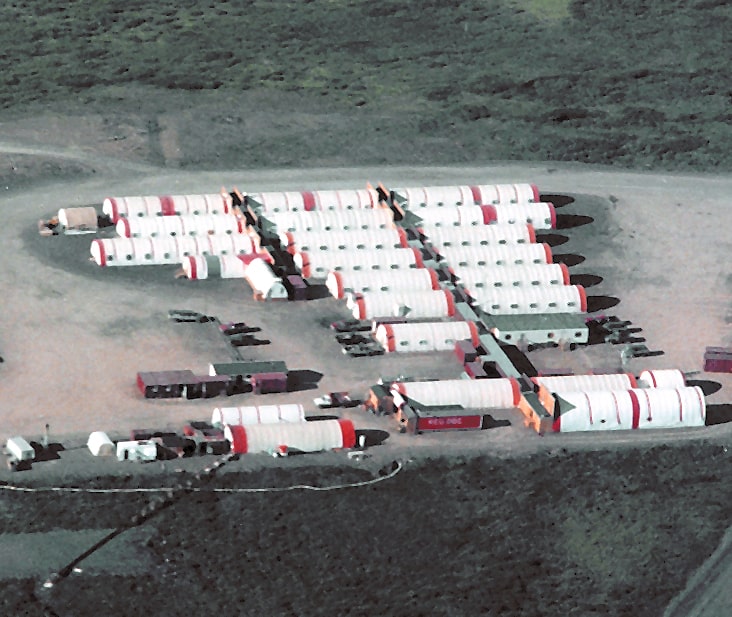


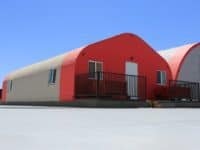

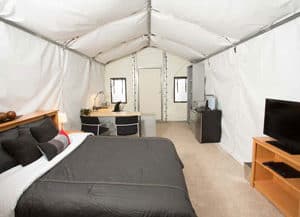

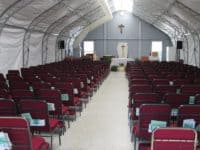
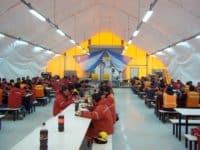
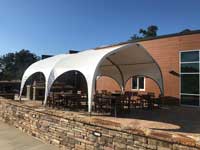
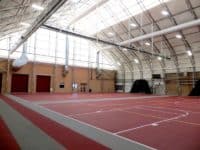

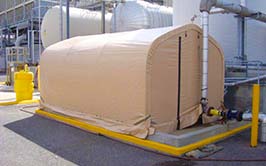

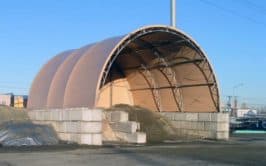
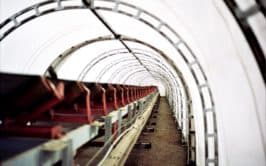
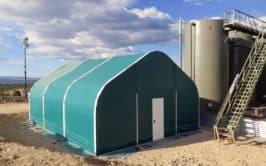


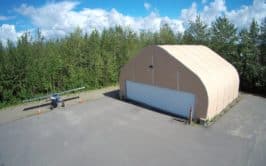
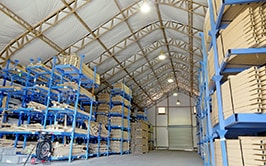
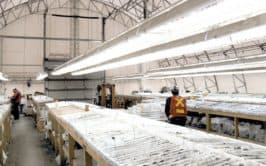
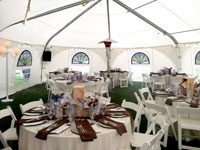
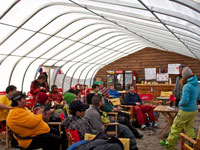

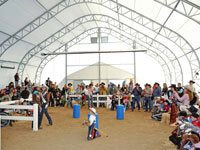
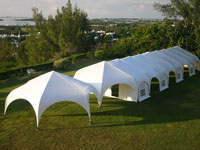

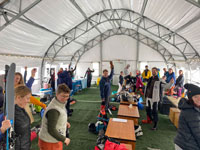
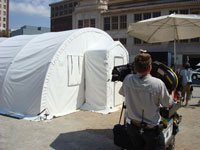
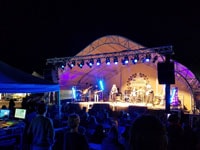




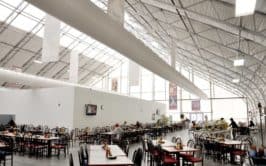

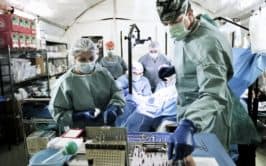




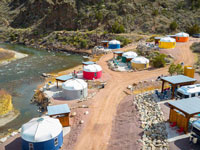
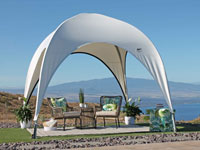

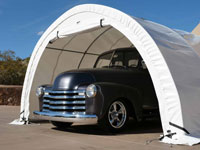
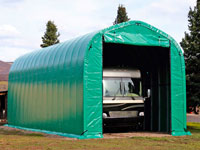




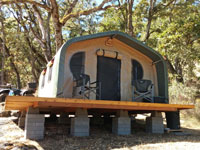
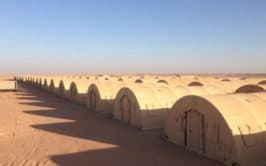
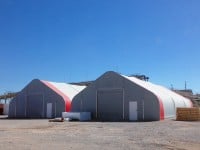
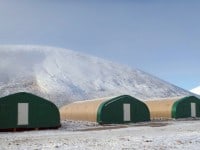
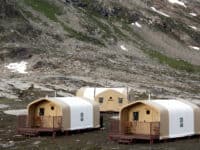
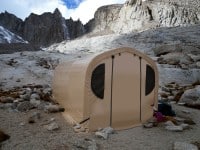
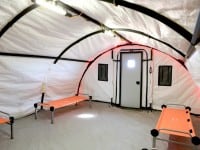
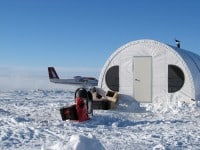
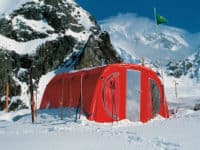
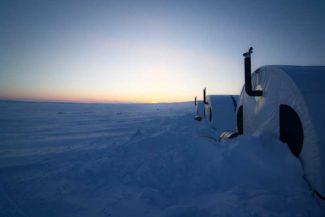

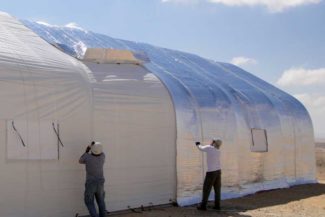


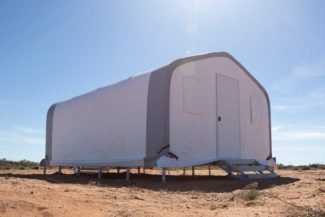

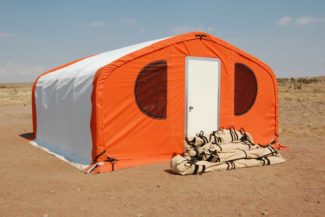




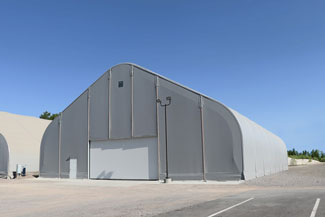

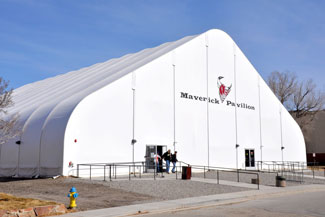
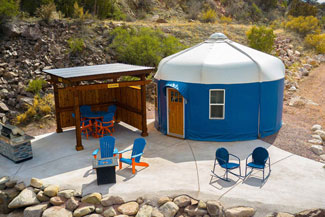
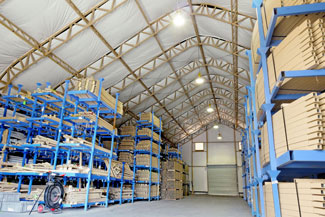

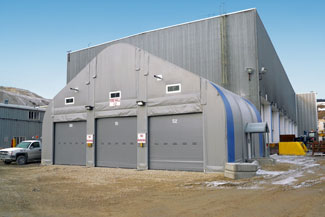
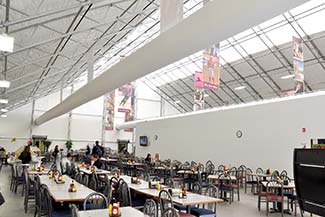

Leave a Reply